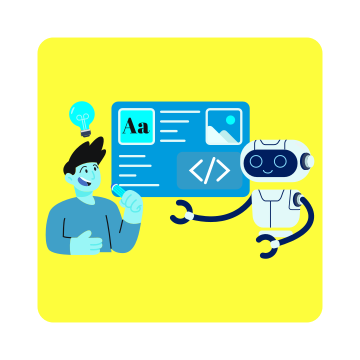How RPA Can Combat the Great Resignation
Organizations scrambled to adapt according to the challenges the pandemic created. In its aftermath, it seems more adjustments will be needed as companies face major labor shortages.
What’s being dubbed the ‘Great Resignation’ – a term coined by Texas A&M University Professor Anthony Klotz in a recent World Economic Forum article – predicts that employees will leave their jobs in unprecedented numbers as the world returns to normal, post-COVID.
The repercussions will be significant labor gaps, difficulty finding new talent to replace outgoing professionals, and the obvious impacts on day-to-day operations.
Aware of this impending reality, companies are proactively planning for turnover and employee shortages by turning to RPA (robotic process automation) to mitigate the impact of the ‘Great Resignation.’
Why Employees Are Resigning, and Will Continue to do so After the Pandemic
The U.S. Bureau of Labor Statistics reported that 4 million Americans quit their jobs in July of 2021 alone.
The Harvard Business Review conducted an in-depth analysis to understand who exactly is leaving their posts. They discovered that resignation rates are highest among mid-level, mid-career professionals between 30-45. Also of note, the same analysis uncovered that resignations are highest in tech and healthcare organizations.
Logical speculation has presented several reasons why employees are leaving their jobs in droves.
One reason being circulated is that at the onset of the pandemic, shaken by the uncertainty and upheaval of the global economic climate, professionals decided to stay where they were in the face of such unprecedented change and instability.
As things started to stabilize, professionals began pursuing other opportunities they had left on the backburner. The going theory is that the increase in resignations is turnover normalizing after it had been stagnant due to COVID-19. The transition to fully remote work and hybrid models has made professional mobility much more possible, leading to an even greater exodus of employees as they pursue new opportunities in a larger market where geo-location is no longer a barrier.
Another common reason being attributed to the ‘Great Resignation’ is much more personal. The stress of the pandemic where work-life balance was thrown into disarray due to COVID-related restrictions, closures, work freezes, and fluctuating workloads has pushed some professionals past a breaking point. Whether simply having the luxury to take a break or adopt a freelance model to recapture the balance they lost over the last couple of years, stress has also factored into the increase in resignations.
The nature of work has also been identified as a contributing factor of labor shortages—especially within the mid-level, mid-career demographic. In many cases, it’s these professionals completing the mundane, repetitive processes at the heart of any organization. The pandemic has caused many to rethink what they want to do. As a result of that introspection, many have realized that they’re seeking more engaging, critical work.
Regardless of the reasons employees are leaving, businesses are facing and will continue to face challenges hiring new talent to replace the outgoing professionals in a shrinking talent pool. They need to find a way to mitigate the impact of this trend. RPA is one way they’re doing that.
How Organizations Can Prepare for Labor Shortages and Low Talent Supply with RPA
The world is producing a critically-thinking workforce with diverse skills that wants to dedicate themselves to engaging, mission-critical work. Organizations must adapt and accommodate a new breed of professionals by improving the employee experience to both attract and retain talent. Automating the mundane, repetitive, rule-based tasks critical to any business is part of that process. It’s one of the main benefits of RPA: increasing the efficiency and quality of routine tasks while enabling employees to focus on more strategic initiatives.
Scaling RPA by automating as much as possible will also mitigate the impact of high turnover. Implementing hyperautomation removes the dependency of mechanical process execution from the employee and places it on the automation that is always available. It ensures that the business won’t be negatively impacted if the employee moves on and takes that process knowledge and execution ability with them.
All in all, the time to ramp up hyperautomation initiatives is now, and there’s no better solution to do that with than Blueprint’s Platform.
Blueprint delivers the automation capture and design capabilities that truly democratizes RPA and makes it accessible to the average business user. Our solution also provides a consolidated location for your entire RPA estate for complete visibility, governance, and control as you accelerate automation implementation to prepare for the ‘Great Resignation.’
Share this
Recent Stories

The Risks of AI in RPA and How to Avoid Them

How to Choose a Future-Proof RPA Solution




